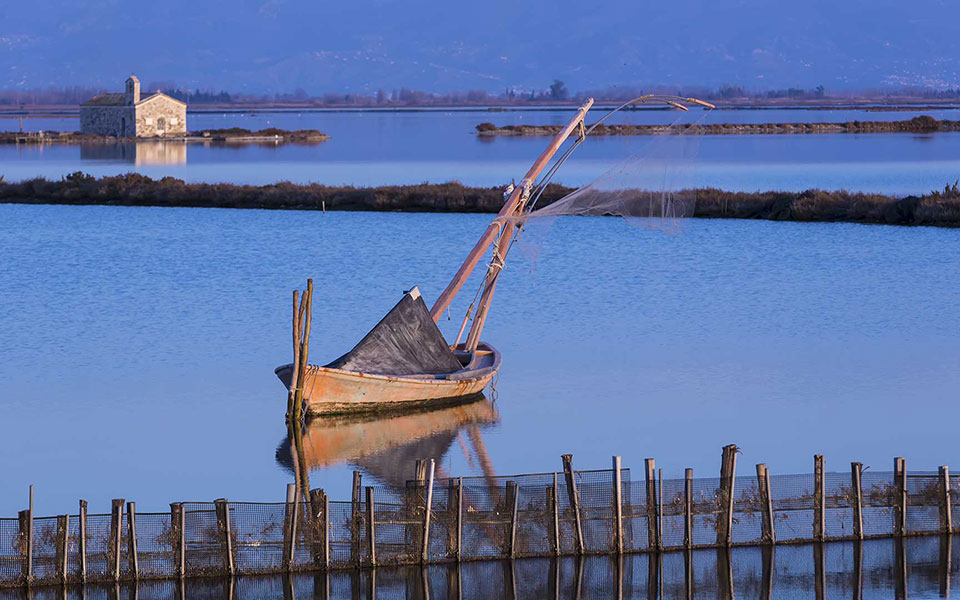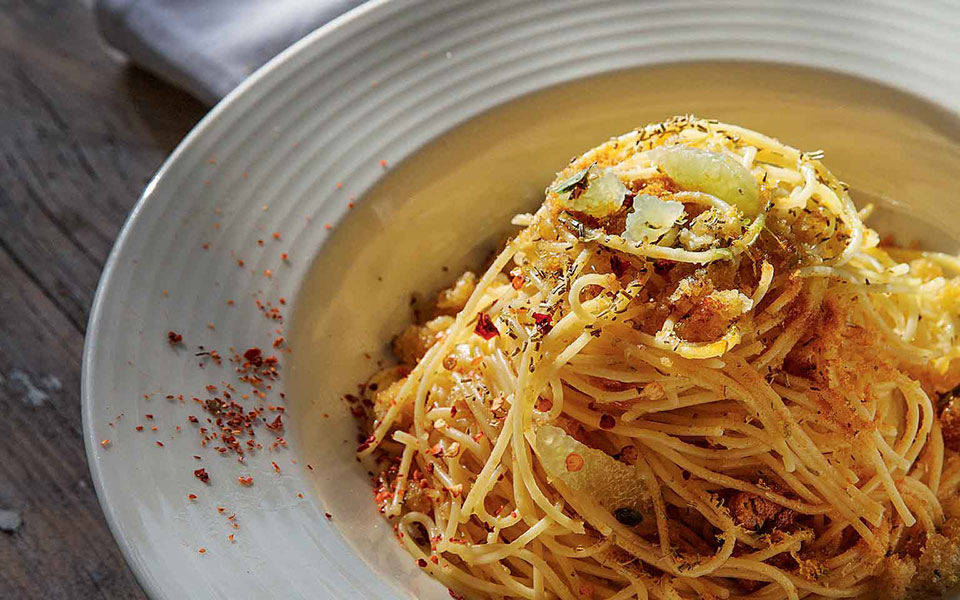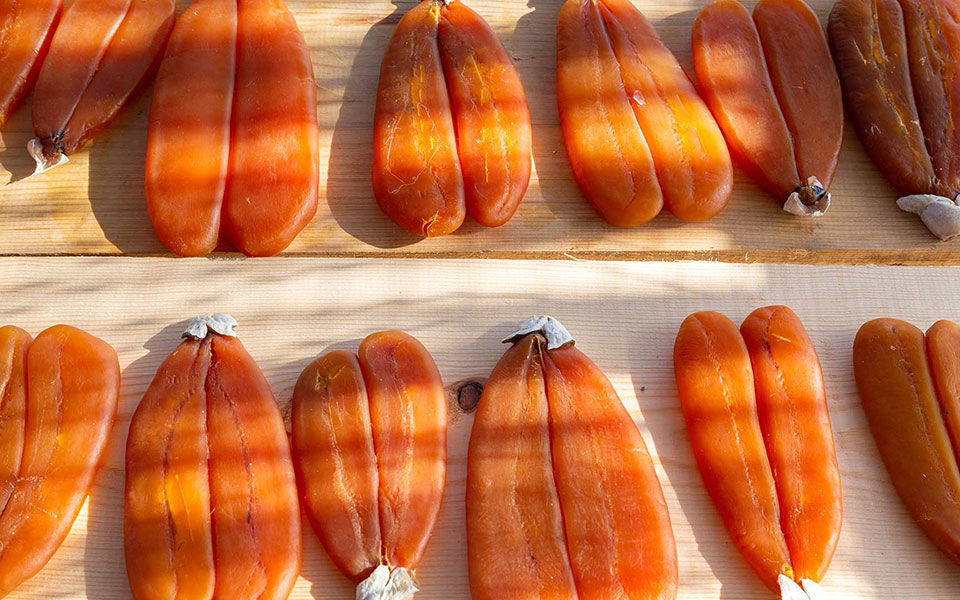Among the most exquisite delicacies produced in Greece is avgotaracho (bottarga), a foodstuff made from fish roe, specifically from the grey mullet. The eggs are carefully removed from the female’s twin sac by experienced fishermen when it is in breeding season, between the months of August and September.
How it’s Made
Delicate and precise movements are needed to process avgotaracho. Once the fresh eggs are removed, they’re washed thoroughly to remove any traces of blood. The fine reddish veins are extracted and covered with salt. The time it sits in the salt is related to its weight, since not all eggs are the same size. Approximately 2 – 3 hours are sufficient.
Then, with the salt still on the eggs, they are ‘kneaded’ to help the salt penetrate. The procedure requires experience. The eggs are rinsed and placed in an airy place, usually a special container, so that the air can reach them. Once the mixture starts to dry, it is “moulded” in order to give it a more rectangular shape. It’s returned to the container and observed daily until it completely dries out and starts to darken. Then, it is repeatedly dipped in high-quality beeswax, which forms a crust that insulates the mixture from the air and helps preserve it for a long time.
Once you buy your avgotaracho, it’s best consumed within a year. After that time, it can get clumpy. It doesn’t need to be refrigerated, but once cut, brush the exposed area with oil, wrap it in clingfilm and keep it in the fridge.

© Michalis Pappas
The Region
Avgotaracho is produced wherever there are fish farms, called ivaria, where mullets abound. Here I am not referring to fish farms where the fish are fed, I mean the ones that are many acres long and with shallow water, in lagoons. They are open and connected to the sea. The usual period is from February to June, when the fish swim into them and the reeds (or metal “gates”) are closed so that the fish can breed there. The enclosed space has plenty of plankton, seaweed, tiny crabs, shrimps and other small things that the fish love.
The ivaria lagoons can be found in Messolongi and Aetoliko, as well as in Preveza, Lefkada, Kotychi, Yialova and Porto Lagos, and some smaller ones in other parts of Greece, such as Corfu. In the past, Messolongi had the largest production of avgotaracho, which today has an official PDO.
Avgotaracho is also produced in several other Mediterranean countries, such as Egypt, Tunisia and Sardinia, but in these places, eggs from large tuna and sea bass are also used.
The Historical Archive of Lefkada has documents attesting to the existence of ivaria before 1400 AD, first used by the Venetians. As for the avgotaracho, referred to as “otarichon” in ancient and Byzantine Greek, there is only one reference in Simeon Seth (a Greek astronomer and general).

© Michalis Pappas
How to Enjoy It
What I can say with certainty from experience is that, in the old days, avgotaracho was more “aged,” its color duller and its texture much harder than the varieties we find today. Now you can find avgotaracho with a soft and gentle color, almost orange. You see the same trend in fine sausages and many other foods; in my opinion, older, more “aged” products are incomparably better than current versions.
Tsipouro, ouzo, whisky and vodka are the only drinks to accompany avgotaracho. Never wine.
The best way to eat avgotaracho is to cut it into thin slices and, after removing the wax and membrane, eat it plain or with small pieces of bread. If you find it difficult, you may need to cut a piece first, remove the wax and then slice it thinly.
Lately, avgotaracho pasta and risotto recipes have become fashionable. If you attempt something like this, know that it shouldn’t be cooked in any way. Instead, add it on top just before before serving.












